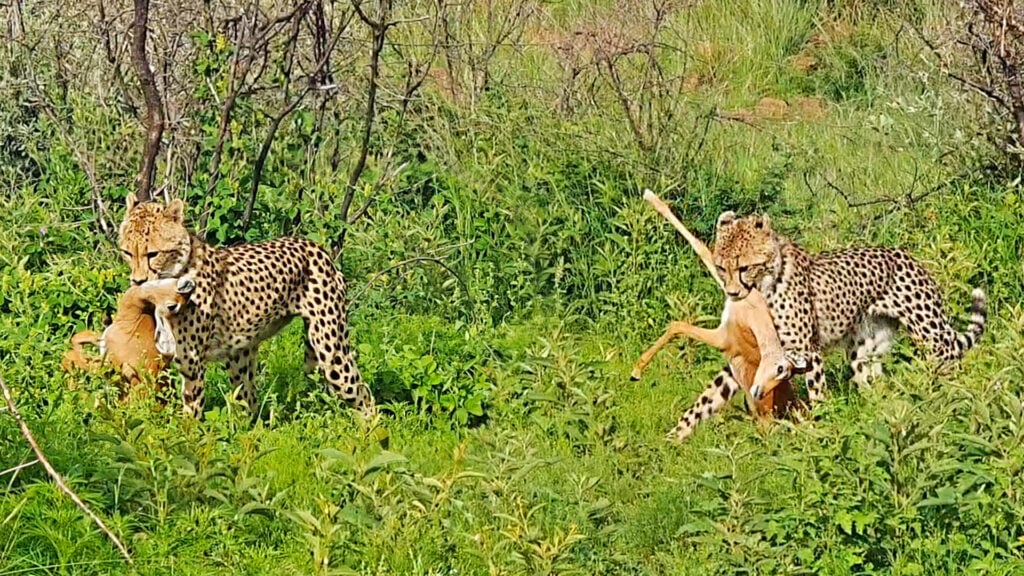
Deon Strydom submitted this video to Latest Sightings. He filmed the incident while on a game drive in South Africa’s Pilanesberg National Park.
Mother cheetah
In the opening scene of the video, an adult female cheetah walks through lush vegetation. By her posture, we can tell that she is in hunting mode.
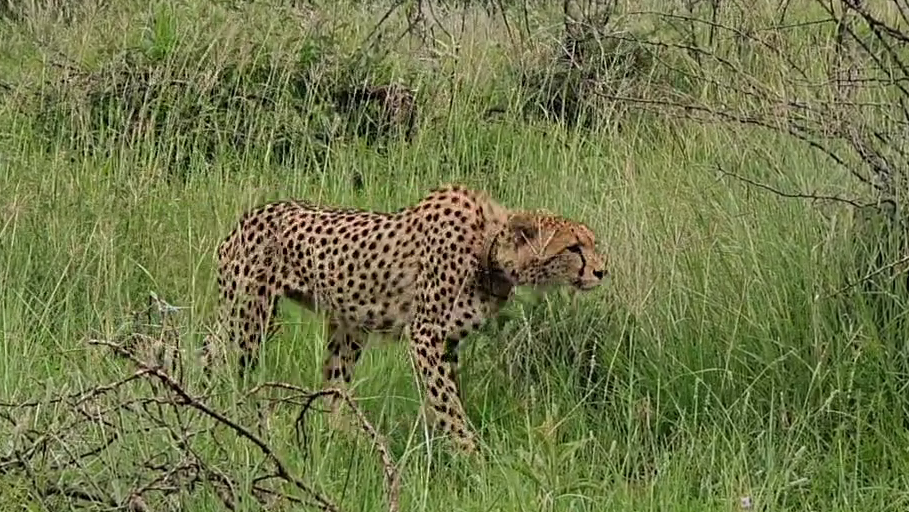
As she stalks, we note that she has a tracking collar. Researchers put these on various cheetahs in the park to monitor their movements, behaviour and habitat use.
Second cheetah on the prowl
The video then cuts to a new scene, showing a young cheetah running off into the dense roadside vegetation. Notably, this animal has no collar. It is the cub of the first cheetah seen.
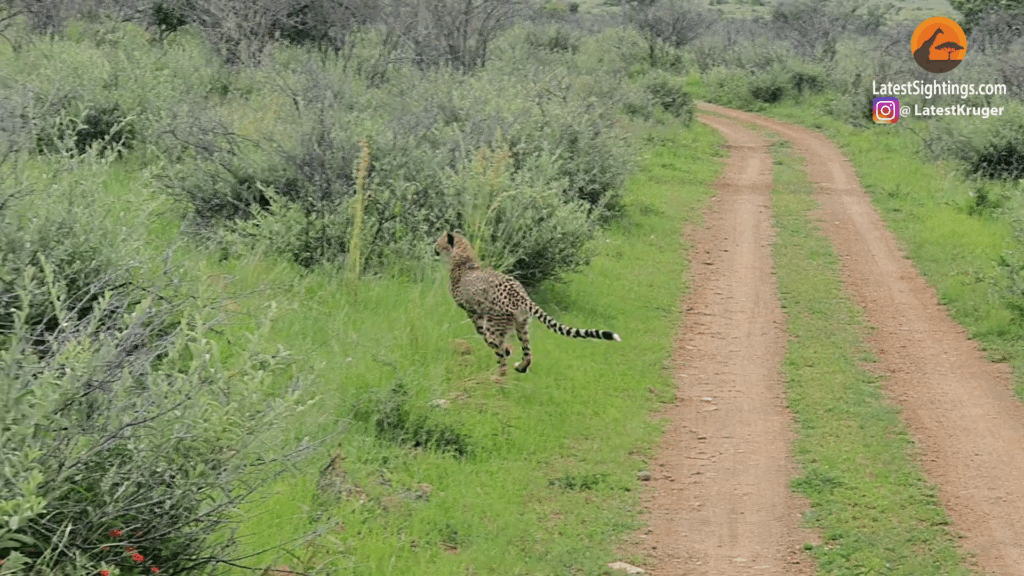
This youngster is also on the hunt. With its head raised, it is trying to spot prey amongst the scattered bushes.
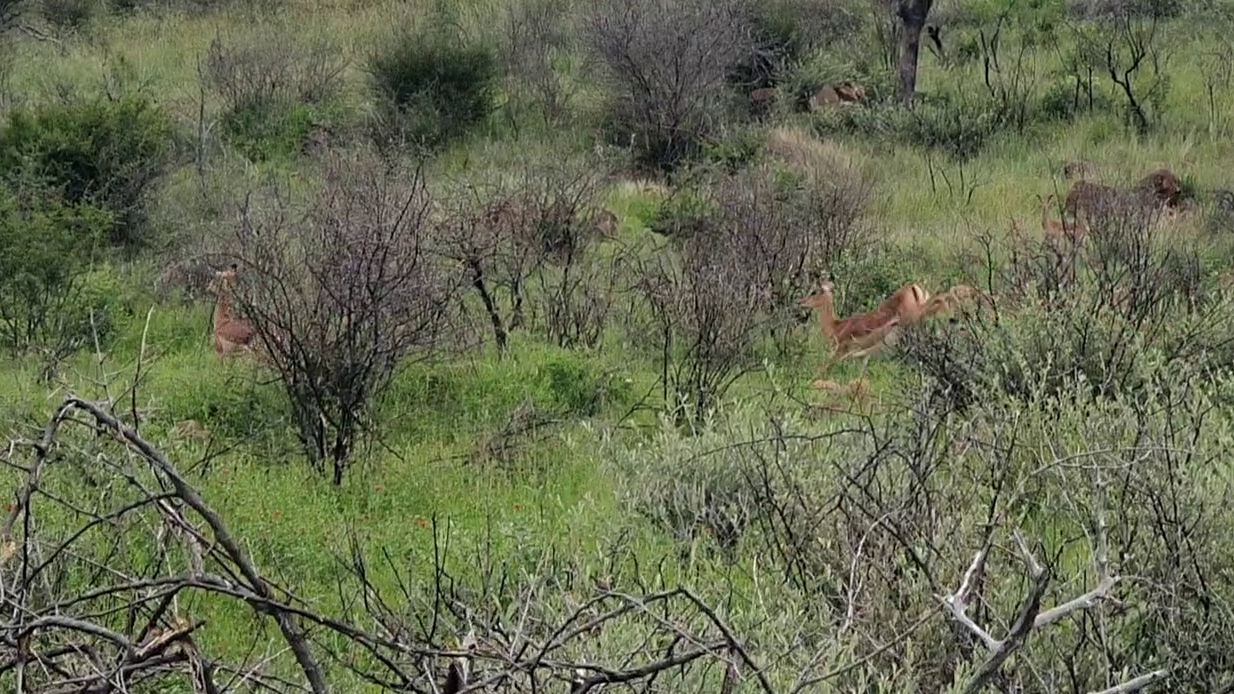
The camera then pans to show a herd of impala on the adjacent slope. They are aware of the cheetah’s presence and running to escape them.
Cheetahs are most successful hunting in open country where they can use their speed to maximum effect. However, their extreme manoeuvrability makes them adept hunters in more confined environments.
Hot pursuit
After losing sight of the cheetah for a moment, Deon relocates it, sprinting towards the impalas’ nursery herd.
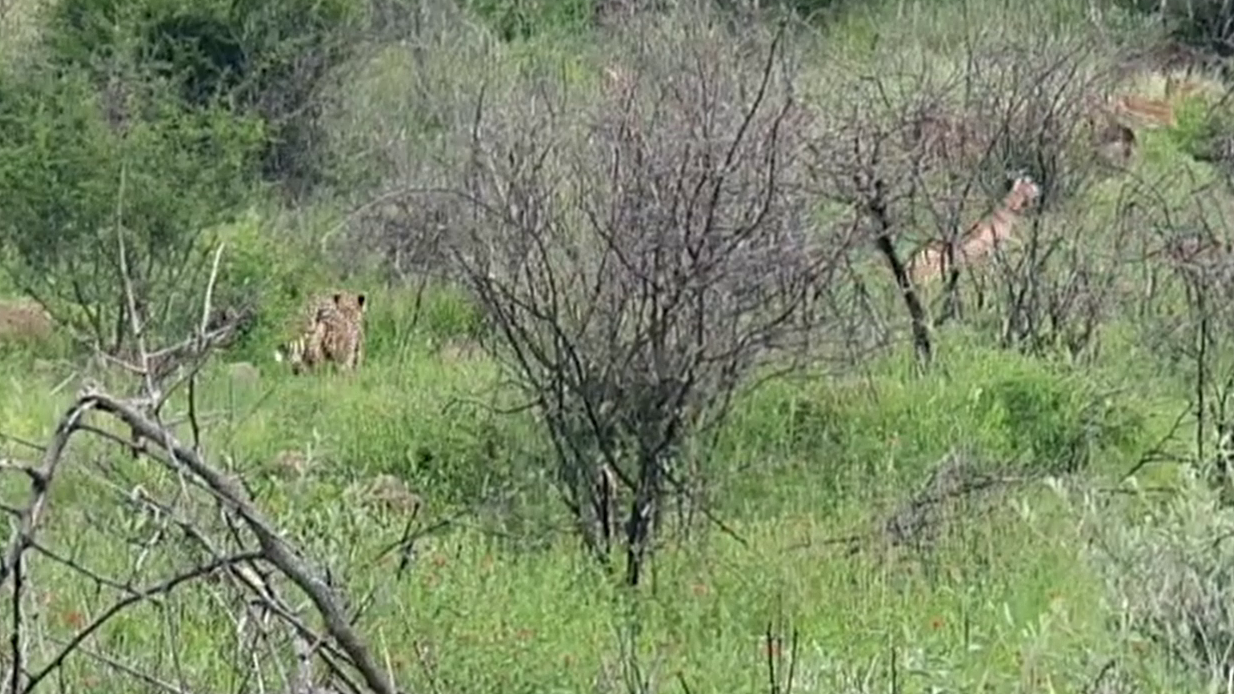
Impala lambs gather in these “creches” as a defensive strategy, where safety in numbers means the majority will escape predatory attempts.
Chirping cheetah
Subsequently, we see the young cheetah standing alone while emitting a high-pitched chirping sound. At its feet, we can just make out the tawny colours of its prey.
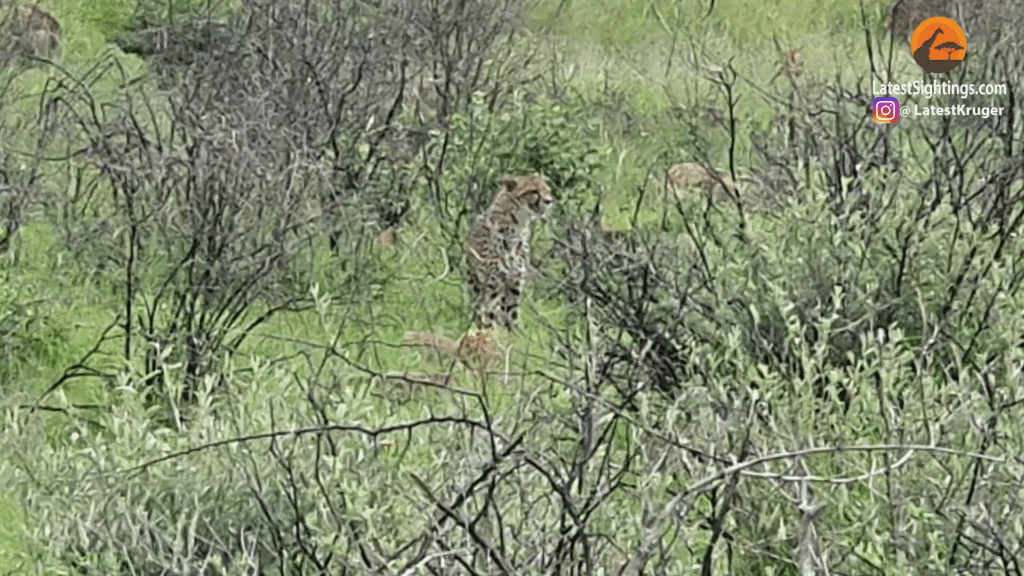
The youngster is communicating that it has food and summoning others to share the feast.
Lamb for dinner
The video then cuts to the youngster dragging its prize, an impala lamb. Probably more so than other big cats, female cheetahs actively encourage their young to attempt hunts.
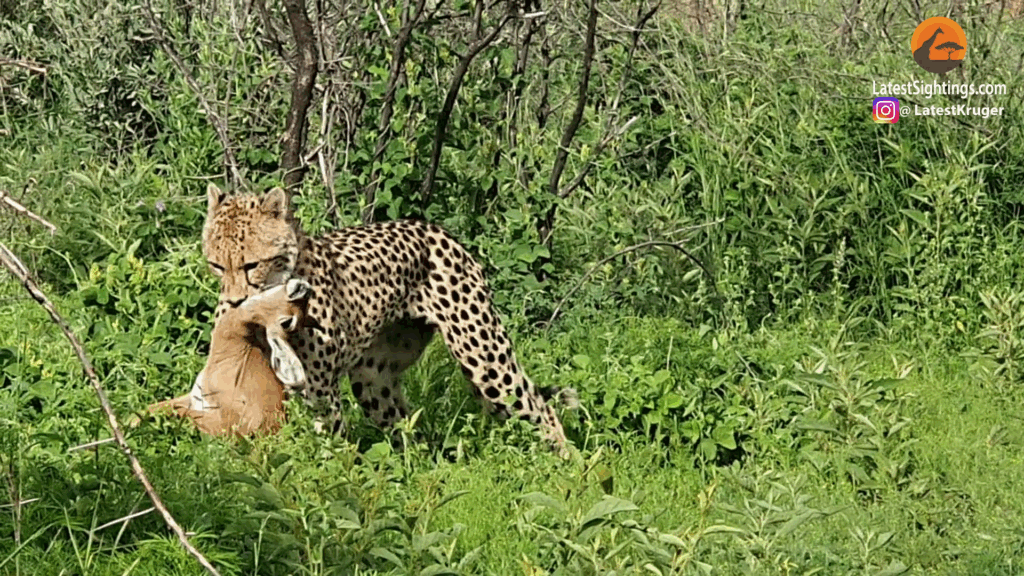
In this instance, the cub seems to have learnt its lessons well
Look ma!
Next, we see the cub rejoin its mother, proudly showing off its prize.
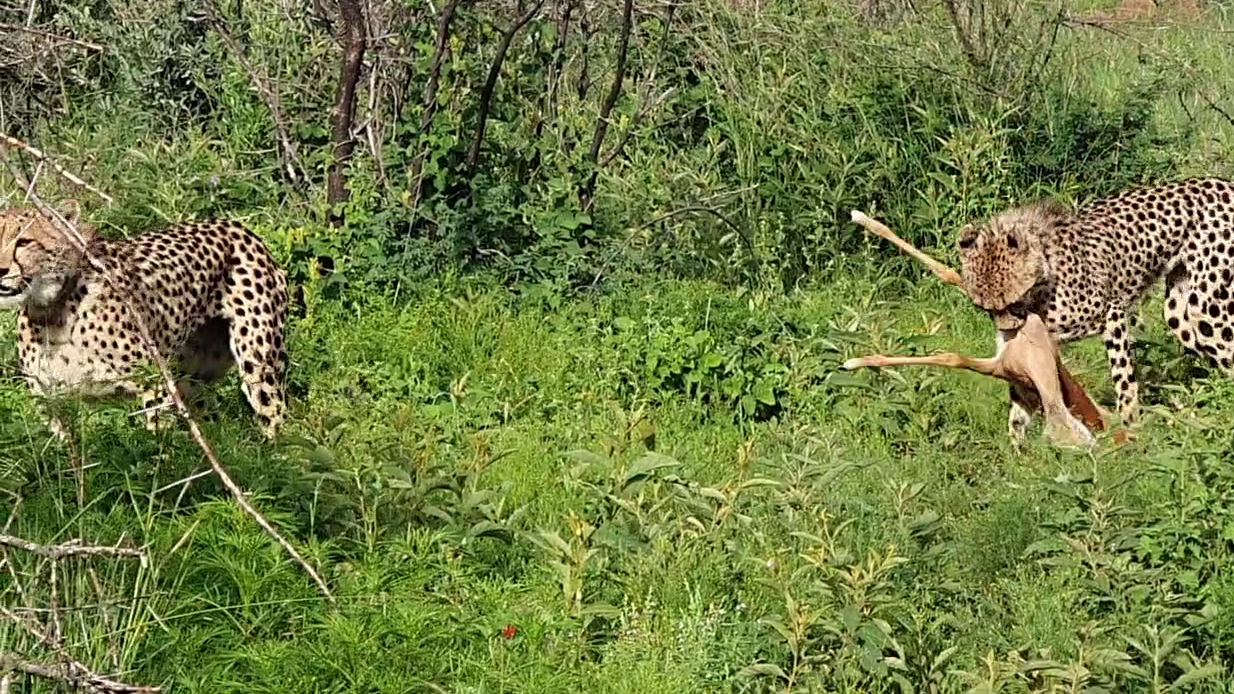
It is at this point that we learn that the mother cheetah has also managed to catch one of the impala lambs.
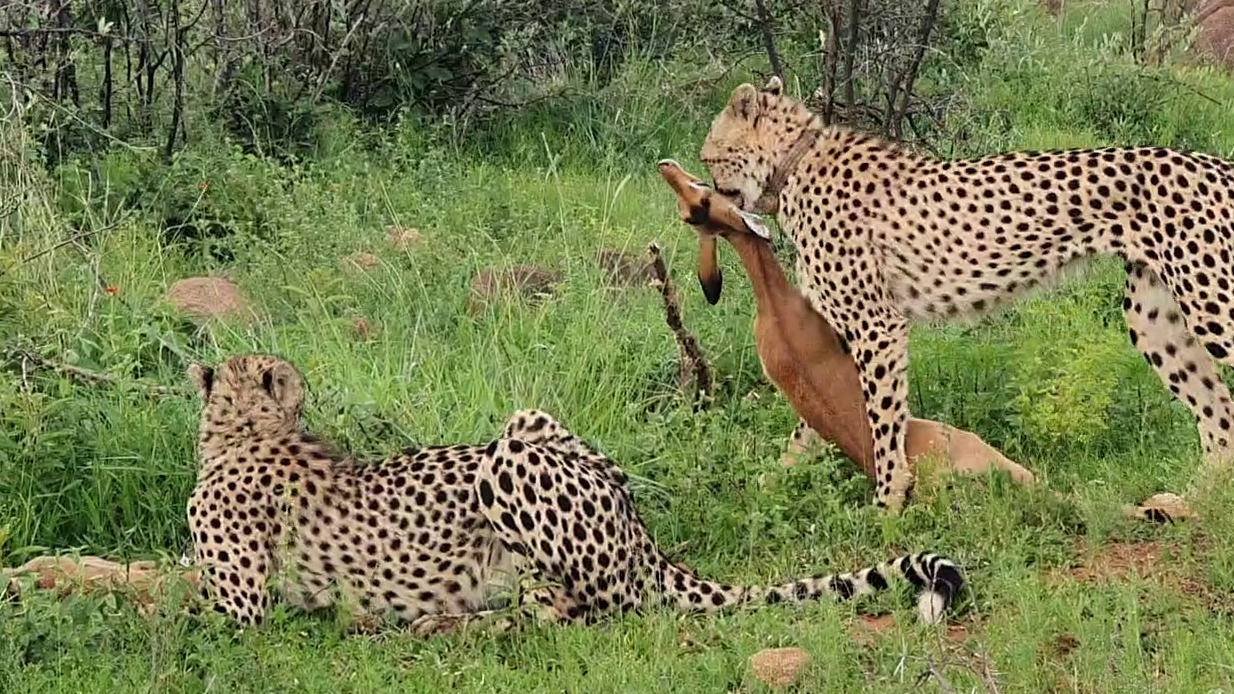
Despite being reunited, the pair are in no hurry to start eating. Typically, cheetahs eat as soon as possible to mitigate against losing their food to larger predators.
Get our Best Sightings as they Come in
Dinner bell
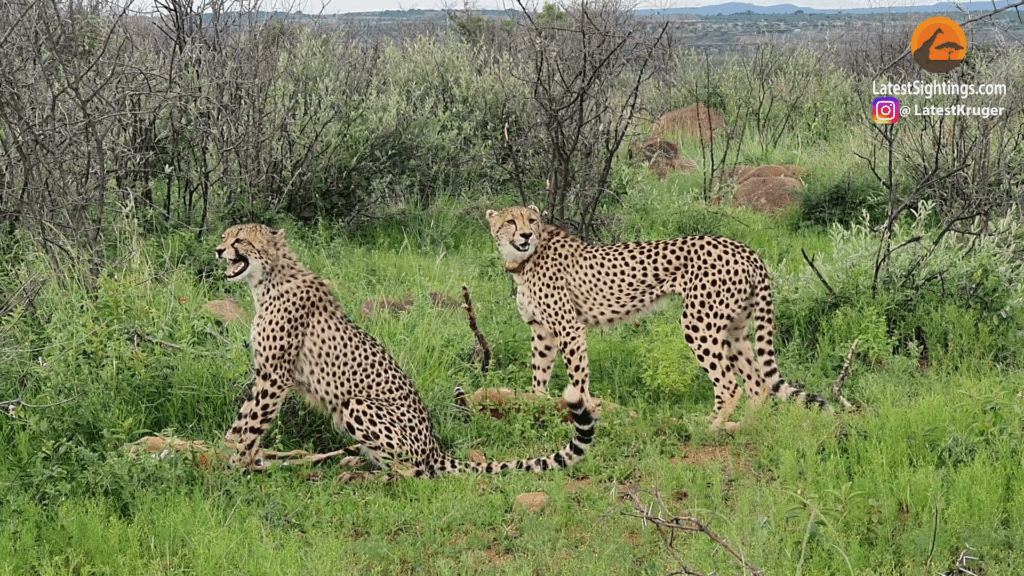
However, in this instance, both mother and cub continue to vocalise. A short while later, we find out why when a third cheetah arrives on the scene.
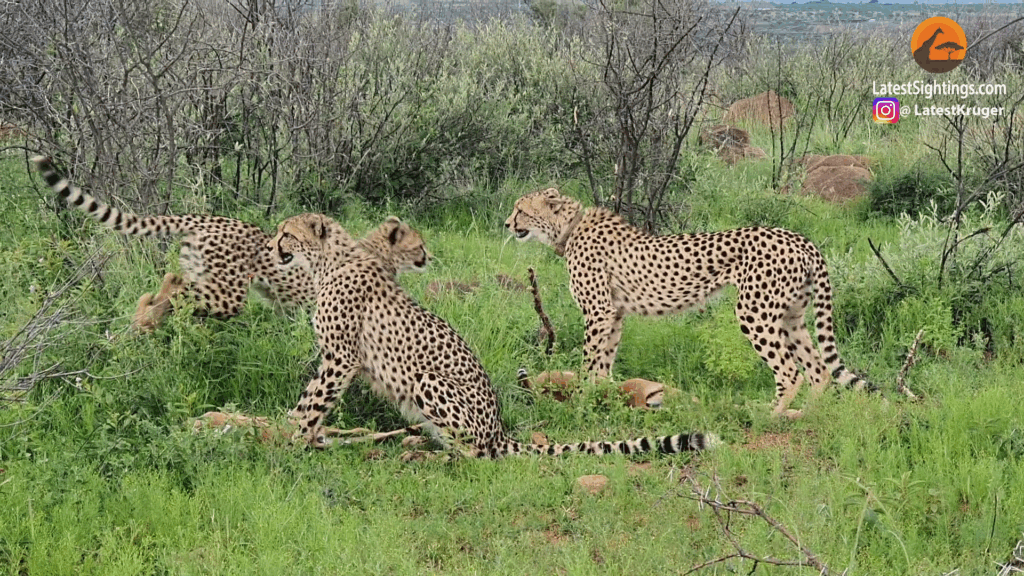
Immediately, the new arrival starts ripping at the carcass. As it does, yet another young cheetah joins them.
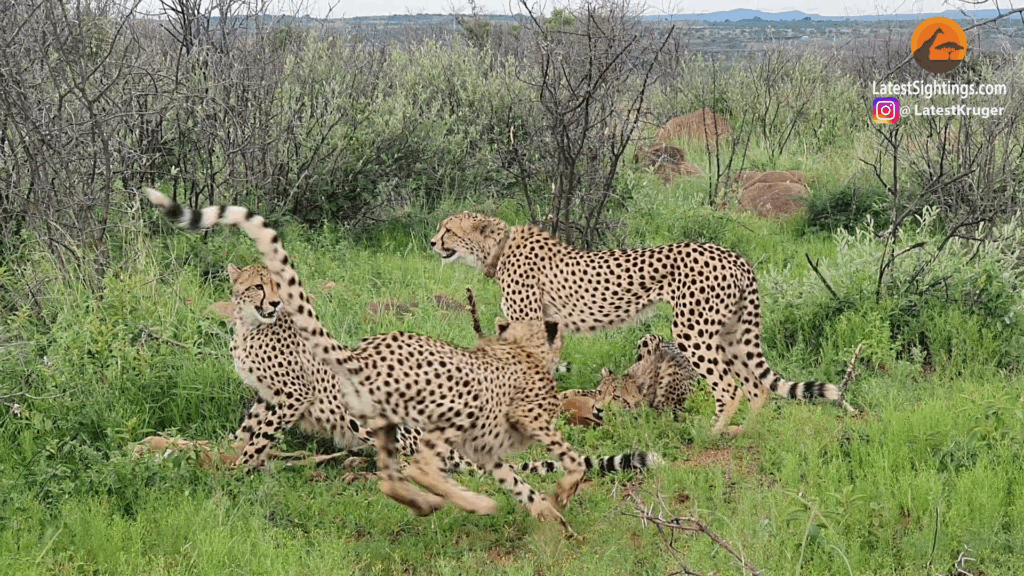
With the family reunited and the successful hunters recovered from their exertions, all four settle down to eat.
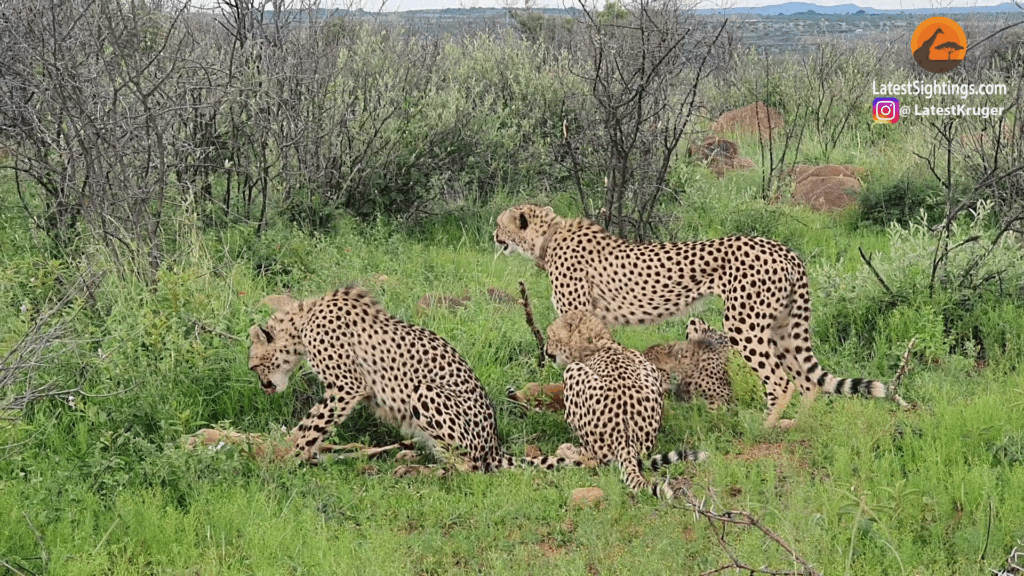
Deadly mothers
Female cheetahs actively start teaching their young to hunt from a young age. At six weeks of age, the cubs follow their mother on hunts, observing her as they do.
On occasions when she catches small prey, like hares, live, she will release them to the cubs and encourage them to practice their skills.
At 7 months, the cubs start to actively hunt their chosen targets, and by a year, are themselves accomplished hunters of small to medium prey.
Although cubs may stay with their mother for up to two years, they can live independently from a year to eighteen months of age.
At this point, the group normally splits, as the mother prepares to raise a new litter.
